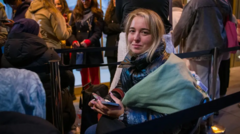The long-held perception of waiting in a queue as an irksome and time-consuming obligation is steadily being redefined. Across various consumer landscapes, the act of standing in line, sometimes for hours, has evolved into a social phenomenon, an activity valued in its own right rather than simply a barrier to access.
This burgeoning trend sees individuals enthusiastically committing significant time to secure coveted items or experiences. From the latest limited-edition fashion drops and exclusive tech gadgets to the highly-anticipated opening of a viral bakery or a rare sample sale offering substantial discounts, the motivation extends beyond the acquisition itself. People are increasingly willing to dedicate half a day or more to participate in these queues.
A key driver behind this behavior is often the desire for exclusivity and the social capital associated with obtaining something scarce. The experience of the wait can foster a sense of community among like-minded individuals, transforming a solitary effort into a shared event. For many, successfully navigating a lengthy queue becomes a badge of honor, providing bragging rights and a tangible story to share, amplifying the perceived value of the ultimate reward.
Furthermore, brands and retailers are keenly aware of this shift, sometimes intentionally cultivating scarcity or highly anticipated launch events that encourage long lines. The visual spectacle of a massive queue can generate significant media attention and social media buzz, further fueling demand and reinforcing the idea that the product or experience is exceptionally desirable. It transforms the purchase into an event, making the journey as much a part of the appeal as the destination. This cultural embrace of extended waiting times marks a notable evolution in modern consumerism, highlighting a deeper connection between product desirability and the effort exerted to obtain it.



